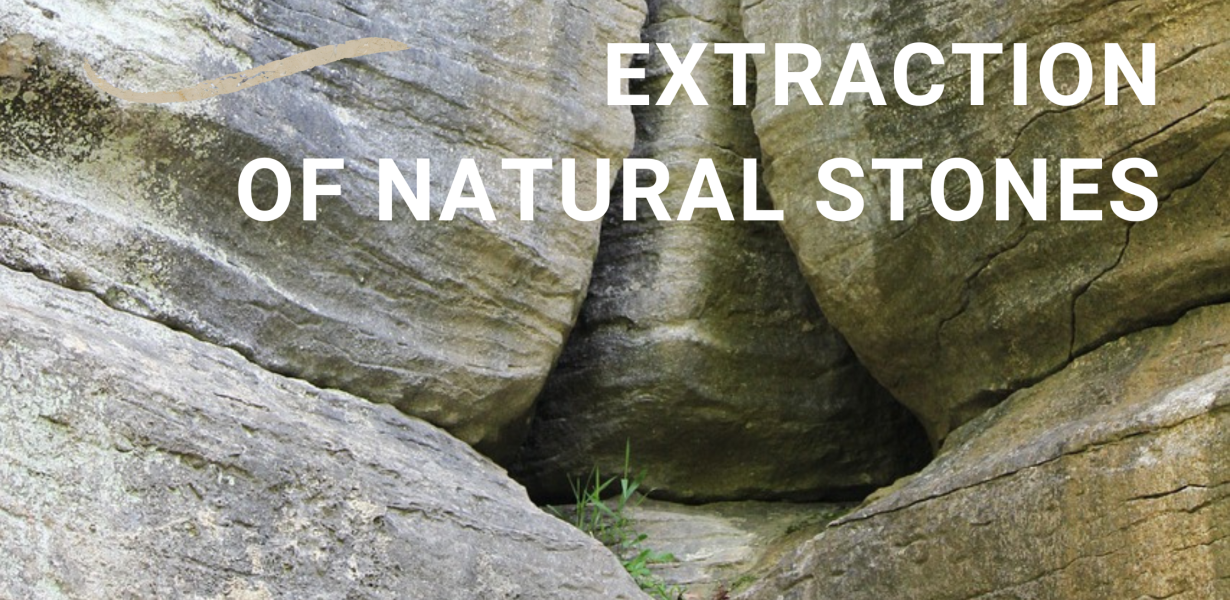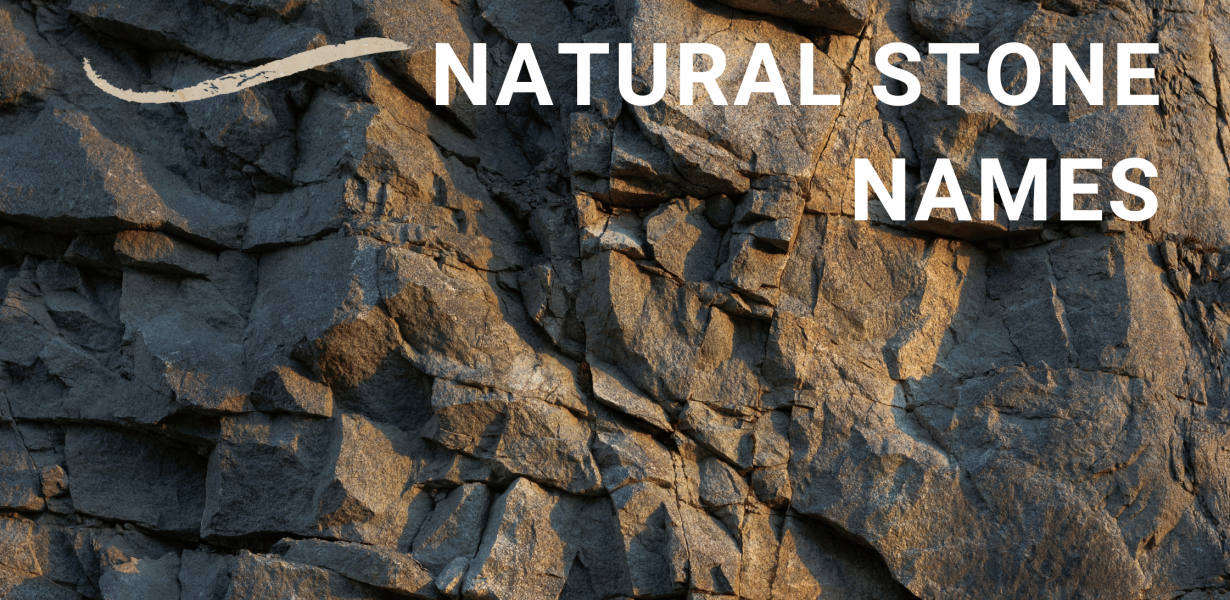A Journey into the Formation of Natural Stones

Imagine being able to touch the Earth's millennial history simply by walking on a marble floor or conversing at a granite table. The rocks we use in architecture and design are materials resulting from extraordinary geological processes that date back millions of years. So how are these natural stones formed?
In this article, we will explore the three main genetic families of rocks: igneous, sedimentary and metamorphic. Understanding their formation and composition will allow you to more consciously choose the most suitable materials for your projects, adding invaluable authenticity and natural beauty to the spaces you create.
From the solidification of magma: Igneous Rocks
Igneous rocks come to life from the solidification of magma, that incandescent material from deep within the Earth. When magma reaches the Earth's surface and cools rapidly, it is called lava, and from this process, effusive rocks are born. These include porphyry, trachyte and basalt, characterised by a structure that often features crystals embedded in a glassy matrix.
But not all magma manages to emerge. When it cools slowly at depth, it gives rise to intrusive rocks. Classic examples are granite, syenite and labradorite. These rocks, having been exposed to a slower cooling process, allow the minerals to completely crystallise, creating a solid and compact structure.
Igneous rocks are generally devoid of fossils and are predominantly composed of minerals from the silicate family. This composition gives them exceptional strength and durability, making them ideal for many architectural and decorative applications.
These types of stone fulfil structural and functional requirements, but also enhance the aesthetic and artistic value of an architectural project. Understanding the unique characteristics of each type of rock allows you to choose the right material for all your specific design and construction needs, guaranteeing long-lasting and visually striking results.
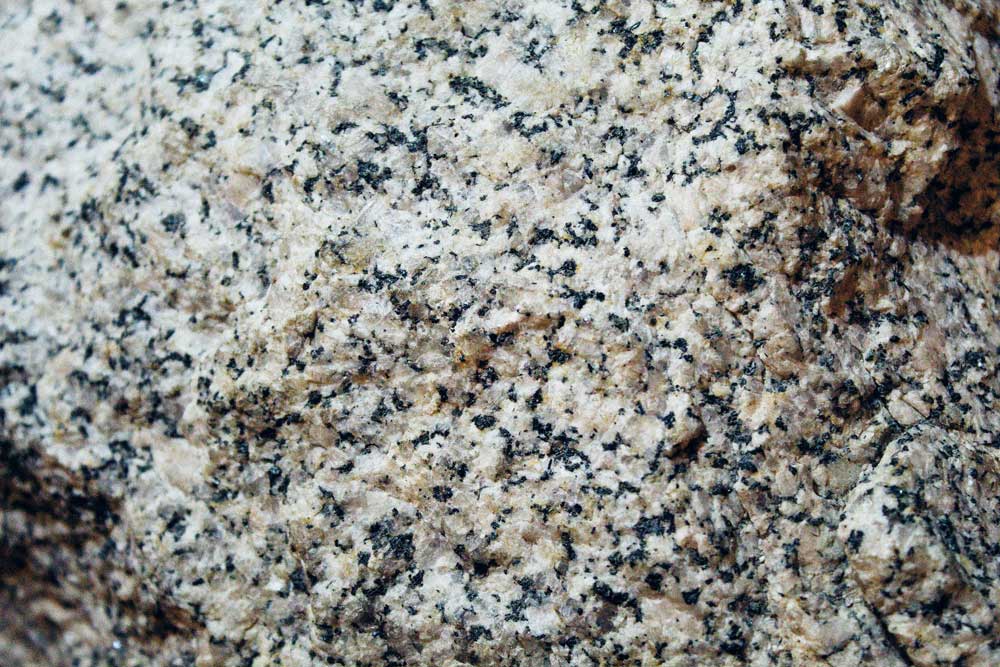
From the accumulation of sediments: Sedimentary Rocks
Sedimentary rocks are the result of a long process of accumulation, compaction and cementation of sediments. These sediments can have different origins: some derive from the fragmentation of pre-existing rocks, as in the case of sandstones, conglomerates and breccias; others come from the chemical precipitation of dissolved minerals in water, as in the case of limestones, dolomites and travertines.
These rocks form in very different environments, both aquatic and subaerial. In the first case, such as lakes, rivers and seas, the sediments are deposited layer by layer, creating geological formations characterised by distinct stratifications. In the second case, wind and ice can transport and deposit sediments, contributing to the formation of these rocks.
One of the distinguishing characteristics of sedimentary rocks is that they can contain fossils. These remains of ancient organisms, trapped in the sediments, provide valuable information about the history of life on Earth. In addition, the variety of colours and textures of sedimentary rocks makes them particularly popular for architectural and decorative purposes.
This type of stone offers a wide range of possibilities for architects and designers, who can exploit their natural aesthetics and physical properties to create unique and striking environments. Choosing a sedimentary rock means not only opting for a beautiful and functional material, but also bringing a piece of natural history into your projects.
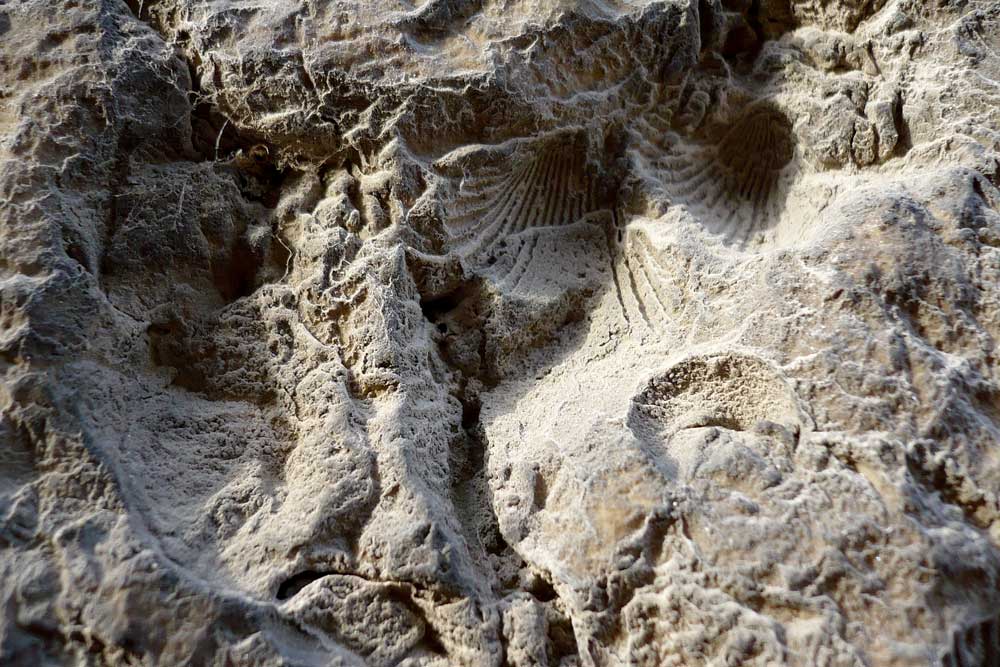
From transformation under pressure and heat: Metamorphic Rocks
Metamorphic rocks tell an extraordinary story of transformation. These rocks come to life when pre-existing rocks undergo a radical change due to high pressures and temperatures, often deep in the earth's crust or near hot magmatic masses. This process of metamorphosis results in a recrystallisation of the minerals present, giving rise to new structures and textures.
For example, calcareous and dolomitic marbles begin their journey as limestones or dolomites, but when exposed to the right conditions of heat and pressure, they transform into beautiful, compact marbles. The textures formed during metamorphosis, together with the mineral composition of the original rock, give the marbles their unique characteristics of veining and lustre.
During the process of metamorphosis, the fossils present in the original rock are generally obliterated, but the end result is a rock of extraordinary beauty and durability. This combination of aesthetics and durability makes metamorphic rocks particularly popular in architecture and design. They are ideal both for structural applications, such as columns and flooring, and for ornamental elements, such as sculptures and decorative cladding.
Metamorphic rocks, therefore, not only tell the story of the Earth's depths, but also offer a wide range of creative possibilities for architects and designers, combining structural functionality and natural beauty in every project.
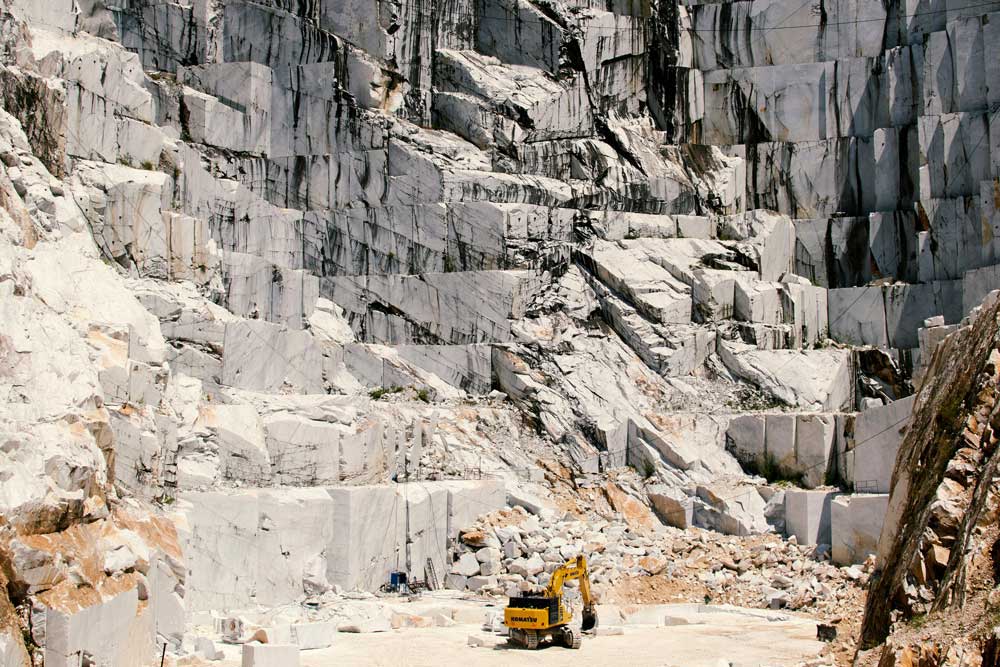
Application of Natural Stones in Architecture
Igneous, sedimentary and metamorphic rocks have various practical applications in modern construction:
- Igneous rocks: due to their strength and durability, they are used for robust and durable constructions, such as outdoor paving and monuments.
- Sedimentary Rocks: their aesthetic beauty and variety of colours and textures make them perfect for interior cladding, flooring and decoration.
- Metamorphic Rocks: in addition to their strength and durability, they are often chosen for high-value ornamental elements, such as sculptures and luxury architectural details.
The rock cycle and distribution over the Earth's crust
The Earth is a dynamic system in which rocks are continuously transformed into sediments and new stones are formed.
- At the surface level, about three quarters of the landmass is made up of igneous rocks, with the rest consisting of sedimentary rocks.
- At the crustal scale, almost all rocks are of igneous origin, with a small percentage of sedimentary rocks.
- Metamorphic rocks, despite representing a very small part in terms of volume, are in great demand for their unique properties and beauty.
These rocks, formed through distinct and complex geological processes, not only make up the earth's crust, but also have a significant impact on contemporary architecture and design. Knowing and understanding the unique characteristics of these rocks allows us to make more informed and conscious choices, both professionally and personally. Using natural stone means enriching our spaces with beauty and history, as well as promoting sustainability by enhancing lasting and authentic resources.
Whether you are a construction professional, a designer or a private citizen, the next time you have to choose materials for a project, we are sure you will consider the richness and possibilities of natural stone with greater awareness.
For any further information, please contact us!
Source: Quaderno Tecnico n° 1, “Le Pietre Naturali”, As.Ma.Ve. Academy, 2022.
Ultimi articoli

Contact us
We are at your disposal, below you will find our contact details.
We are waiting for you.
come to us, call, write
Fill out the form
All fields are required.
Consorzio Marmisti della Valpantena
P.IVA 01707830236 - REA VR-191854








